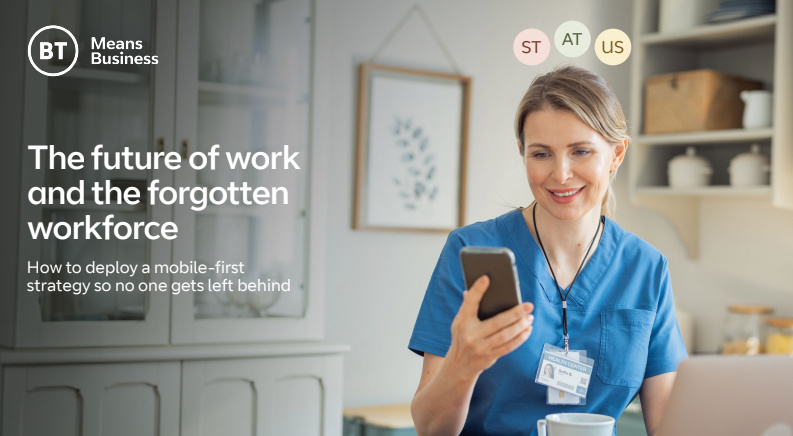Spec 2018: Slack lets developers build and test apps inside desktop client
Collaboration firm adds new tools to make it easier to build Slack apps


Slack has announced a suite of new developer tools, as part of a range of platform changes designed to foster the growth of its app ecosystem.
The new features will make it much quicker and easier for developers to build and test Slack apps within Slack itself, according to the company's head of developer relations, Bear Douglas.
"Right now if, for example, you want to try out Slack's API, you have to go create an app token, you have to get the keys you need, you maybe have to spin up a project, spin up a web server, in order just to ping calls to our API," she told IT Pro. "Now, what you'll be able to do is install an app inside Slack and then directly from Slack test out our API."
Reference documents are also easier to access. Developers can now search them via a Slack command, and they can then be read within the Slack client, or the longer-form version can be accessed by clicking out to Slack's website.
The changes were announced as part of Spec 2018, the company's inaugural annual conference for developers, customers and partners.
Alongside these developer tools, the company is also launching some new features designed to make Slack apps more visible for everyday users. The most prominent is App Actions - a framework for adding third-party app integrations to the three-dot menu that currently houses functions including pinning messages to channels and marking them as unread.
The feature will launch with pre-made integrations for five services, including Asana, Bitbucket, HubSpot, Zendesk and Jira. As an example, the feature will allow users to convert a Slack message from a colleague directly into an Asana task.
Sign up today and you will receive a free copy of our Future Focus 2025 report - the leading guidance on AI, cybersecurity and other IT challenges as per 700+ senior executives
Power users of Slack will likely be aware that these kinds of integrations already exist, in the form of Slack commands. These already allow users to interact with third-party services in a number of ways, such as adding tasks to project management tools, sharing files from cloud storage platforms, and more.
In fact, Douglas told IT Pro that the new App Actions don't actually add any new functionality that wasn't already offered by Slack commands, but emphasised that they provide a much more intuitive and user-friendly way to access these capabilities, pointing out that while developers and techies are inherently familiar with using slash-based commands thanks to tools like IRC, most line-of-business users are much more used to contextual menu systems.
"It's not something that should be undersold, because at the moment, a lot of users ... may not be aware of the integrations that are already installed on their team, and so some of the work that we've done over the past year and a half or so has been on making integrations more discoverable."
One App Action that may prove very useful is the ability to view the JSON for specific elements within Slack.
"If you see something beautiful inside Slack," Douglas said, "and you wonder 'how can I do that?', there will be an Action in that overflow menu that lets you inspect the JSON for that message. So if you want to copy something beautiful you saw, or just break it down, you can do that automatically without leaving Slack."
Making apps more attractive is something that the company is emphasising, and it will soon launch a new toolkit for modifying the UI of Slack Apps, which it is dubbing 'Block Kit'.
Slack is aiming to build on its initial success as an enterprise collaboration platform, pursuing a partnership-based strategy in which the platform integrates as deeply as possible with the numerous SaaS-based tools that businesses rely on. The strategy is similar to the tactic Facebook has taken with its Workplace platform, which also announced a slew of new integrations earlier in the year.
"They're absolutely integral. They're what makes Slack more useful than just a messaging service, and it's something that we try to make clear to our [third-party] developers: that they are key to our success," Douglas told IT Pro.
"It's really about lowering the barriers and making it easy to build Slack apps. So we're building our tooling offering all the time, and we're trying to be as responsive as possible."
Adam Shepherd has been a technology journalist since 2015, covering everything from cloud storage and security, to smartphones and servers. Over the course of his career, he’s seen the spread of 5G, the growing ubiquity of wireless devices, and the start of the connected revolution. He’s also been to more trade shows and technology conferences than he cares to count.
Adam is an avid follower of the latest hardware innovations, and he is never happier than when tinkering with complex network configurations, or exploring a new Linux distro. He was also previously a co-host on the ITPro Podcast, where he was often found ranting about his love of strange gadgets, his disdain for Windows Mobile, and everything in between.
You can find Adam tweeting about enterprise technology (or more often bad jokes) @AdamShepherUK.
-
 Can enterprises transform through startup theory?
Can enterprises transform through startup theory?In-depth For big corporations, the flexibility, adaptability, and speed of a startup or scale-up is often the total opposite of what’s possible within their own operations
-
 AI is creating more software flaws – and they're getting worse
AI is creating more software flaws – and they're getting worseNews A CodeRabbit study compared pull requests with AI and without, finding AI is fast but highly error prone
-
 'Digital hide-and-seek': Workers are wasting hundreds of hours a year sourcing the information they need to carry out their role
'Digital hide-and-seek': Workers are wasting hundreds of hours a year sourcing the information they need to carry out their roleNews Knowledge workers globally are wasting a quarter of their working week tracking down information, new research from Atlassian has revealed.
-
 Untethered: How CIOs and CISOs are paving the way for the new hybrid workforce
Untethered: How CIOs and CISOs are paving the way for the new hybrid workforceWhitepaper Effective techniques to transition from exposed legacy infrastructure to an effective zero trust strategy
-
 Unlocking the power of your digital services
Unlocking the power of your digital servicesSponsored Businesses have invested significant cash into technology since COVID-19, but are they really getting their money's worth?
-
 Delivering fast and secure digital experiences for the modern hybrid workforce
Delivering fast and secure digital experiences for the modern hybrid workforceWhitepaper A new approach to digital experience monitoring that can monitor the health of all systems
-
 Collaboration is the glue that holds your business together
Collaboration is the glue that holds your business togetherSPONSORED A combination of productivity tools and cloud telephony can enable the best from your workforce
-
 The future of work and the forgotten workforce
The future of work and the forgotten workforcewhitepaper How to deploy a mobile-first strategy so no one gets left behind
-
 The case for an accelerated device refresh cycle
The case for an accelerated device refresh cycleWhitepaper Achieving a more cost-effective device lifecycle overall
-
 Employees are choosing how they work
Employees are choosing how they workWhitepaper And with the right secure digital strategy, this could be a great thing for your business: today and far into the future
